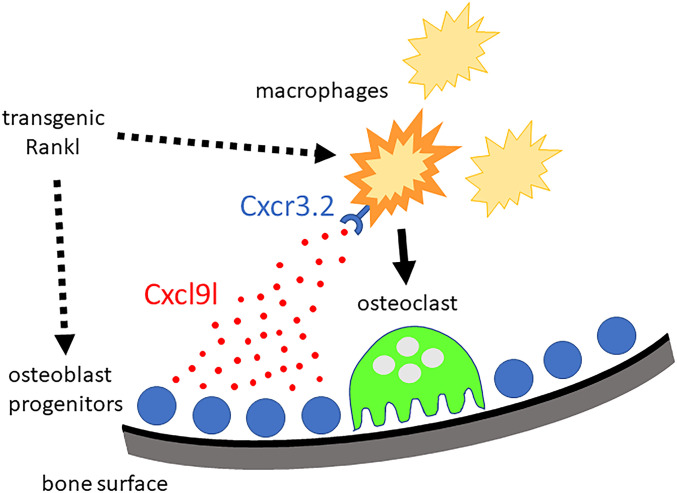Fig. 7.
Chemokine control of osteoclast recruitment. Under osteoporotic conditions, Rankl acts on osteoblast progenitors located at the mineralized matrix of vertebral bodies and on macrophages as osteoclast progenitors. In osteoblast progenitors, Rankl either directly or indirectly induces the production and release of Cxcl9l. Freely diffusing Cxcl9l then activates macrophages that express the Cxcr3.2 receptor. This triggers the activation and recruitment of macrophages toward mineralized matrix, where they differentiate into osteoclasts and contribute to bone resorption.

